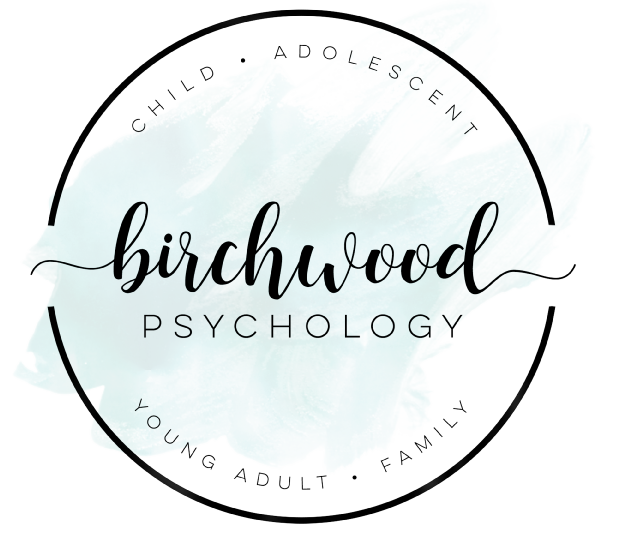My child has been diagnosed with an eating disorder. Now what?
In my last blog post, I talked about recognizing the signs of an eating disorder and what to do if you suspect your child may have one. If an eating disorder has been diagnosed by your child’s pediatrician, then you probably are feeling very scared or worried. You’ve been informed that eating disorders can have serious, sometimes irreversible health consequences from heart damage to brittle bones, and that your child needs to start treatment immediately. But how to find a qualified provider? What level of treatment is needed? And what type of treatment should you choose?
If you live in Michigan, I treat adolescents and young adults with eating disorders at my private practice in Traverse City. I currently provide treatment via teletherapy due to covid-19 precautions. Teletherapy makes it possible for me to treat patients throughout Michigan from Kalamazoo to Marquette – including those with eating disorders. Most tech savvy teens are pretty comfortable with video chatting, but if teletherapy is not your child’s thing, you can go on Psychology Today and search for a psychologist near you that treats adolescents with eating disorders. But first, read on to find out how to decide if a therapist is a good fit to treat your child.

Treatment settings for adolescent eating disorder
Treatment for eating disorders is typically delivered in one of five different settings. From least to most intensive, these are:
- Outpatient therapy (1-2 individual one-hour sessions a week with a therapist)
- Intensive outpatient therapy (2-3 sessions a week, for a few hours each, possibly still allowing your teen to attend school or work)
- Partial hospitalization programs (5 days a week for the full day for teens who are medically stable but need supervision)
- Residential treatment (24-hour care for teens who are medically stable but need supervision)
- Medical hospitalization (24-hour inpatient care for teens who are medically unstable)
The outpatient setting is appropriate for most teenagers with eating disorders. But before I provide outpatient therapy to a prospective patient, I first need to know their height and weight to determine whether they are at an appropriate percentile-for-age BMI for outpatient treatment. I also need to consult with their referring pediatrician to make sure they are medically stable. Usually patients start out at the lowest level of care that is safe for them, and then move up to a higher level if their progress isn’t sufficient.
Treatment types for adolescent eating disorders
There are several different types or modalities of treatment for adolescents with eating disorders. The main three are cognitive behavioral therapy (CBT), dialectical behavior therapy (DBT), and family-based treatment (FBT). All of these are empirically-supported treatments for eating disorders, but some are better for treating anorexia while others are better for treating bulimia and binge eating. Additionally, some have more or less family involvement. For children and younger adolescents, strong family involvement in treatment is a must.
Enhanced cognitive behavior therapy
 In my practice, I provide an empirically-supported treatment for adolescents with eating disorders called Enhanced Cognitive Behavior Therapy (CBT-E). This treatment is transdiagnostic, which means it can be delivered to teens with anorexia nervosa, bulimia nervosa, or binge-eating disorder who are medically stable. The main goal of CBT-E is to help patients reduce the excessive importance of shape, weight, and eating control in their life, and to develop healthier thoughts and behaviors moving forward. This is achieved through the establishment of regular eating patterns, cessation of binging eating and/or purging behaviors, challenging overly strict dietary rules, exposure to “fear foods,” improving body image, and – if appropriate – weight restoration. The treatment concludes with several sessions on relapse prevention.
In my practice, I provide an empirically-supported treatment for adolescents with eating disorders called Enhanced Cognitive Behavior Therapy (CBT-E). This treatment is transdiagnostic, which means it can be delivered to teens with anorexia nervosa, bulimia nervosa, or binge-eating disorder who are medically stable. The main goal of CBT-E is to help patients reduce the excessive importance of shape, weight, and eating control in their life, and to develop healthier thoughts and behaviors moving forward. This is achieved through the establishment of regular eating patterns, cessation of binging eating and/or purging behaviors, challenging overly strict dietary rules, exposure to “fear foods,” improving body image, and – if appropriate – weight restoration. The treatment concludes with several sessions on relapse prevention.
CBT-E treatment is time-limited and individually tailored. I typically see patients once or twice weekly (depending on severity of their symptoms) for 30-40 sessions of individual outpatient therapy, with regular parent check-ins. While most of the “work” is with teens directly, parents play a strong, supportive role. In my experience, teens really like CBT-E because it is engaging, collaborative, and gives them control over their own treatment. As such, CBT-E fits really well with teens’ need for autonomy and independence. My role as the therapist is to help patients decide to change, and then introduce procedures to help them do exactly that.
So if you are a parent dealing with a new diagnosis, I understand that this can be a scary time with seemingly overwhelming choices. But your child’s doctor will let you know if your child is medically stable and can start with outpatient treatment or if a more intensive treatment is needed. Take a few days to learn about the different treatment modalities and consider which approach may be best for your family. If you have a teen who is medically stable, outpatient CBT-E is an effective, time-limited, and individually tailored treatment option for adolescents with anorexia nervosa, bulimia nervosa, or binge-eating disorder. Also, the collaborative nature of CBT-E tends to be more tolerable to teens than other more prescriptive treatments (which translates to them being more likely to attend sessions!).

Please remember that an eating disorder diagnosis is not a life sentence. It can be overcome. With treatment, approximately 70% of teens with eating disorders will fully recover and there is no reason to think that your son or daughter won’t be one of them.

